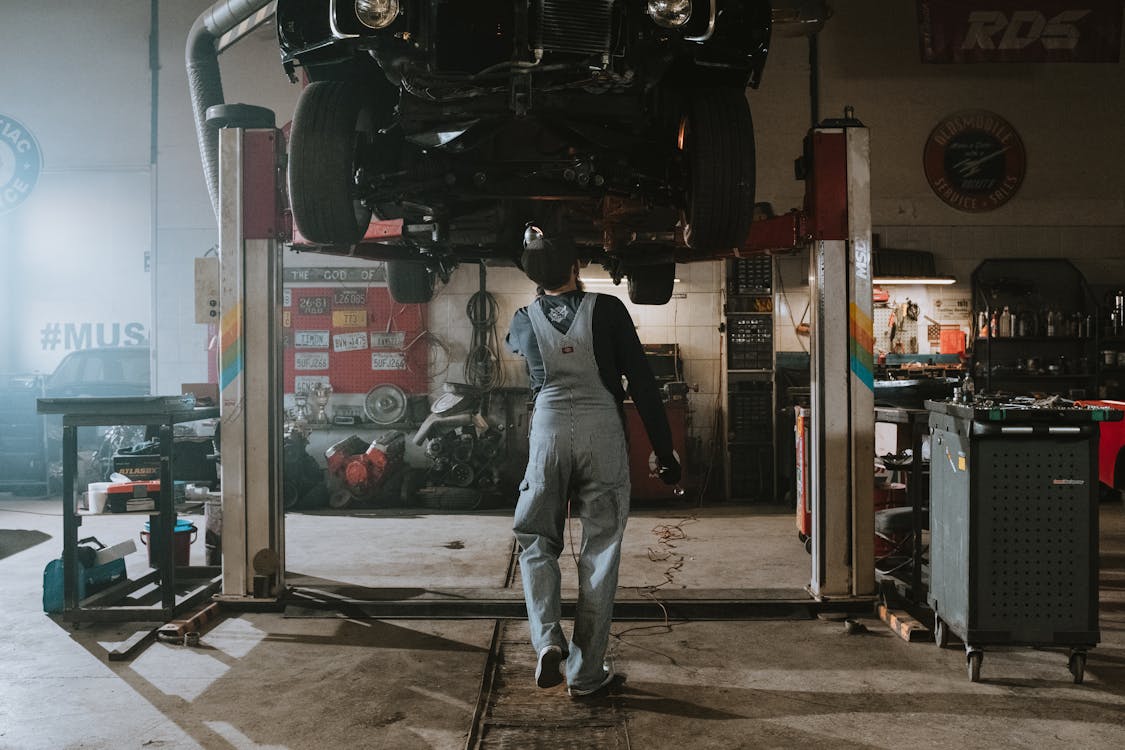Essential Car Maintenance Services in Kenya: A Comprehensive Guide for Motorists

Maintaining your car through regular service is critical to its longevity, performance, and safety. Whether you're a new car owner or an experienced motorist, understanding the types of service your car needs and why they are important can save you from costly repairs and ensure a smooth driving experience. This guide covers everything you need to know about car service in Kenya, including what to check for during service, how to interpret service records, and what to do when buying a car with incomplete service records.
Table of Contents
- Types of Car Service in Kenya
o 1.1 Routine/Basic Service
o 1.2 Intermediate Service
o 1.3 Major Service
o 1.4 Specialised Services (e.g., wheel alignment, air conditioning) - Why Regular Car Service is Important
o 2.1 Extending Car Lifespan
o 2.2 Enhancing Fuel Efficiency
o 2.3 Ensuring Safety
o 2.4 Preventing Major Repairs - What Each Type of Service Involves
o 3.1 Routine/Basic Service Checklist
o 3.2 Intermediate Service Checklist
o 3.3 Major Service Checklist - How to Ensure Your Service is Done Properly
o 4.1 Before-Service Checks
o 4.2 Post-Service Inspection
o 4.3 Requesting a Detailed Service Report - How to Avoid Late Service and Spot Overlooked Services
o 5.1 Tracking Mileage and Service Intervals
o 5.2 Signs Your Car Needs Service
o 5.3 Verifying Completed Work - The Importance of Service Records for Buying and Selling
o 6.1 Why Service Records Matter
o 6.2 Evaluating a Car’s Service History When Buying
o 6.3 Presenting Service Records When Selling - What to Do When Buying a Car with Incomplete or Scanty Service Records
o 7.1 Conducting a Full Mechanical Inspection
o 7.2 Requesting Service from a Trusted Mechanic
o 7.3 Negotiating Price Based on Service Gaps
1.Types of Car Service in Kenya
Car service in Kenya typically falls into three categories, depending on the age and mileage of the vehicle.
1.1 Routine/Basic Service
This is the most common form of maintenance, usually performed every 5,000 to 10,000 km. It involves changing the engine oil and oil filter, checking fluid levels (coolant, brake fluid, power steering fluid), and a visual inspection of brakes and tyres.
1.2 Intermediate Service
Conducted every 10,000 to 20,000 km, intermediate service includes everything in a basic service, plus checks and replacements such as the air filter, fuel filter, and spark plugs. Brake pads and fluid levels are also thoroughly inspected.
1.3 Major Service
This is a more extensive service performed every 40,000 to 60,000 km. It includes full checks of the engine, transmission, suspension, steering, and cooling systems. Key components like the timing belt, water pump, and gearbox oil may also be replaced.
1.4 Specialized Services
Occasionally, cars need more targeted services like wheel alignment, air conditioning servicing, or electrical system checks. These are usually done on an as-needed basis or when symptoms arise.
2.Why Regular Car Service is Important

2.1 Extending Car Lifespan
Regular servicing prevents wear and tear from compounding over time, allowing your car to run smoothly for longer.
2.2 Enhancing Fuel Efficiency
Well-maintained engines, clean air filters, and properly inflated tyres improve fuel efficiency, saving you money in the long run.
2.3 Ensuring Safety
Brake checks, tyre inspections, and steering assessments are vital for ensuring that your car is safe on the road.
2.4 Preventing Major Repairs
By identifying potential problems early, regular servicing can prevent more serious (and expensive) breakdowns down the line.
3.What Each Type of Service Involves
3.1 Routine/Basic Service Checklist
Oil and oil filter change
Check fluid levels (coolant, brake, steering)
Visual check of brakes, tyres, and lights
3.2 Intermediate Service Checklist
All of the above, plus:
Replacement of air filter and fuel filter
Brake pad inspection and replacement
Spark plug replacement
Battery check
3.3 Major Service Checklist
All of the above, plus:
Timing belt inspection and replacement (if necessary)
Transmission fluid change
Suspension and steering inspection
Full system diagnostics
4.How to Ensure Your Service is Done Properly
4.1 Before-Service Checks
Before taking your car for service, note down the car’s current performance. For example, is it pulling to one side, making strange noises, or struggling to accelerate? This can help mechanics focus on potential issues.
4.2 Post-Service Inspection
Once the service is complete, inspect the car yourself. Check the new oil level, look at the filters, and test drive to ensure smooth handling and brakes.
4.3 Requesting a Detailed Service Report
Always ask for a full breakdown of what was done during the service. This report helps you keep track of work completed and identify what will need attention in the future.
5.How to Avoid Late Service and Spot Overlooked Services
5.1 Tracking Mileage and Service Intervals
Use the car’s odometer to monitor when the next service is due. Keep a service logbook or set reminders based on the manufacturer’s recommended service intervals.
5.2 Signs Your Car Needs Service
Be on the lookout for warning signs like unusual noises, vibrations, fluid leaks, or dashboard alerts. These could indicate overlooked services.
5.3 Verifying Completed Work
Ask the mechanic to show you the replaced parts, like old filters or brake pads, so you know the job was done correctly.
6.The Importance of Service Records for Buying and Selling

6.1 Why Service Records Matter
A full service history helps establish the car’s condition and confirms that regular maintenance has been conducted, which boosts the resale value.
6.2 Evaluating a Car’s Service History When Buying
When buying a used car, carefully examine the service records to ensure there are no gaps or missed services. A well-maintained car is less likely to have hidden issues.
6.3 Presenting Service Records When Selling
Having comprehensive service records can help justify a higher asking price. It assures potential buyers that the car has been well cared for.
7.What to Do When Buying a Car with Incomplete or Scanty Service Records
7.1 Conducting a Full Mechanical Inspection
If the service history is lacking, take the car to a trusted mechanic for a thorough inspection to identify any hidden problems.
7.2 Requesting Service from a Trusted Mechanic
Before finalizing the purchase, consider having a major service done to bring the car up to date. This can prevent future issues.
7.3 Negotiating Price Based on Service Gaps
Use the incomplete service history as a bargaining chip to negotiate a lower price, compensating for the potential need for repairs.
Conclusion
Regular car service is vital to keeping your vehicle running efficiently and safely on Kenyan roads. By understanding the types of services, ensuring proper checks, and maintaining accurate service records, you can significantly enhance your car’s longevity and performance. Additionally, when buying a used car, a thorough evaluation of its service history can prevent costly mistakes.
Remember, if you need quick and transparent financing, contact us through our contact form, call us on +254791573231 or visit one of our branches across Nairobi, Kiambu, Machakos, and Kajiado counties to explore your financial opportunities.




Comments ()